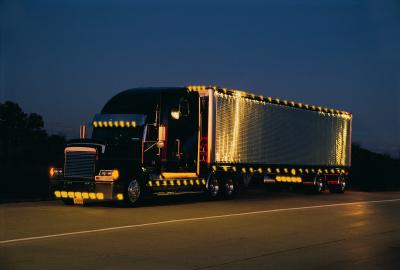
The best drivers in the world often compare the act of driving to meditation, and for good reason. While operating a motor vehicle, the brain of a very focused driver shifts to what is known as a "theta" wave pattern -- the same encountered during meditation, out of body experiences and while experiencing metaphysical phenomena. Such brainwave patterns allow the individual to go into a state of "watchful detachment" -- noticing things that others take for part of the scenery. Things like "No engine braking" signs.
Tractor trailers don't always use their brakes to slow down. Trucks are heavy, and using the brakes all the time -- especially when trying to control speed while going downhill -- would quickly overheat the brakes or wear them out. For this reason, trucks often use an engine brake. Normally, when a piston in an engine hits the top of its travel on the compression stroke, it compresses air and fuel against the bottom of the cylinder head; the compressed mixture then explodes, sending the piston back down. A Jacobs or "Jake" brake is a compression-release brake, a valve that opens when the piston reaches the top of its travel. Pressure from the cylinder quickly vents through the valve and dumps into the exhaust. This creates a vacuum in the cylinder when the piston goes back down, allowing a driver to slow the truck down just by lifting his foot off the throttle.
Jake brakes can be very loud, though; those releases of pressure can sound like an AK-47 firing through an un-muffled exhaust. Newer trucks typically emit more of a loud grumble than a machine-gun clatter, because the turbo, diesel particulate filter and exhaust system muffle the sound. But older Jake brakes were well loud enough to cause avalanches in mountainous areas, especially as whole convoys of trucks went machine-gunning down mountain passes. That's why you'll often see engine braking signs in mountainous areas. You'll also see them in cities, generally on hilly interstates and highways adjacent to residential or business districts.